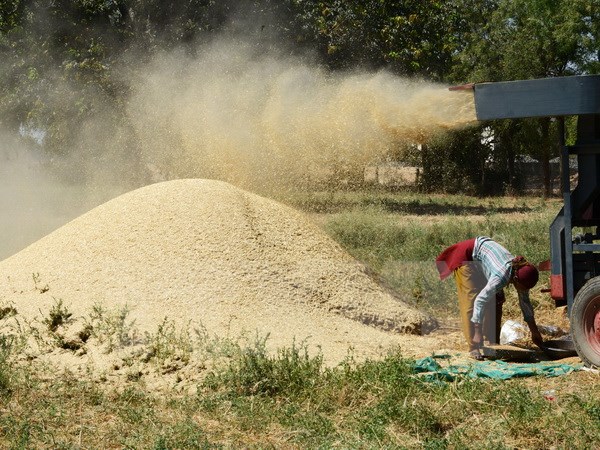Scientists have successfully studied rice varieties with low methane emissions
According to information published in the journal Nature (UK) on July 22, scientists from the United States, Sweden and China have successfully studied starch-rich rice varieties but emit less methane, contributing to the goal of creating a rich food source, limiting the situation of global warming.
Successful research of rice varieties with low methane emissions
The cultivation of wet rice, despite creating a great source of food for billions of people, is also one of the factors that produce methane - a gas capable of causing climate change . Each year, rice fields usually discharge an average of 25-100 million tons of this gas.

Illustration.(Source: AFP / VNA)
Although methane exists in the atmosphere for a shorter period of time than carbon dioxide (CO2), the largest agent causes a greenhouse effect, but this gas interferes with the heat emission of the Earth's surface. .
Therefore, expanding the area of rice cultivation will create a greater threat to the planet.
Given this fact, scientists believe that it is necessary to study sustainable technologies that can both increase rice production, and still limit the amount of methane from cultivated areas to the atmosphere.
Recognizing this, they embarked on a study of the new rice variety SUSIBA 2 by transplanting a gene of barley into conventional rice.
Through a three-year cultivation process at a field in China , scientists found that the cultivated area of this rice variety not only gave greater amounts of starch but also significantly reduced methane emissions.
Paul Bodelier, a scientist at the Netherlands Ecology Research Institute, said the study was a breakthrough.
However, he argues that there is a need for research to assess whether this rice variety can produce sustainable yield to meet the food needs of mankind.
- Dong Thap: Successfully creating new rice varieties
- Discovering new rice varieties with antioxidant capacity
- Phu Tho successfully tested many new rice varieties
- An Giang creates rice varieties that are flood-resistant and drought-resistant
- Vietnam successfully bred two high quality rice varieties
- The technique to create rice varieties is higher than the head, yield 30 tons / ha
- 'Soft rice' ... helps solve hunger
- Successful restoration of rice varieties Bao thai Cho Don
- Rice varieties with salinity and high yield
- Choose to create two new high quality aromatic rice varieties
- Japan finds a new rice variety that can withstand drought
- Bac Can preserves rare native native sticky rice varieties
 'Barefoot engineer' invents a pipeless pump
'Barefoot engineer' invents a pipeless pump Process of handling dead pigs due to disease
Process of handling dead pigs due to disease Radiometer
Radiometer Warp Engine: Technology brings us closer to the speed of light
Warp Engine: Technology brings us closer to the speed of light Top 8 surprising facts about sushi - Japan's national dish
Top 8 surprising facts about sushi - Japan's national dish  Risk of dangerous diseases from the habit of eating cold rice
Risk of dangerous diseases from the habit of eating cold rice  Why are Japanese people no longer interested in rice and gradually switching to bread?
Why are Japanese people no longer interested in rice and gradually switching to bread?  World's oldest wine discovered in China
World's oldest wine discovered in China  Unique delicious rice variety in flood season, the more flooded the higher the yield in An Giang
Unique delicious rice variety in flood season, the more flooded the higher the yield in An Giang  Can rice water prevent hair loss?
Can rice water prevent hair loss? 